
Code Of Conduct
For Members and Instructors of the Australasian Aikikai
Scope and Purpose
This code of conduct and organisational policy document has been developed to:

Define Australasian Aikikai principles and practices that support the promotion of the Japanese Martial Art of Aikido

Define clear expectations for the ethical and appropriate behaviour that everyone must abide by in all member dojos that are part of the Australasian Aikikai organisation
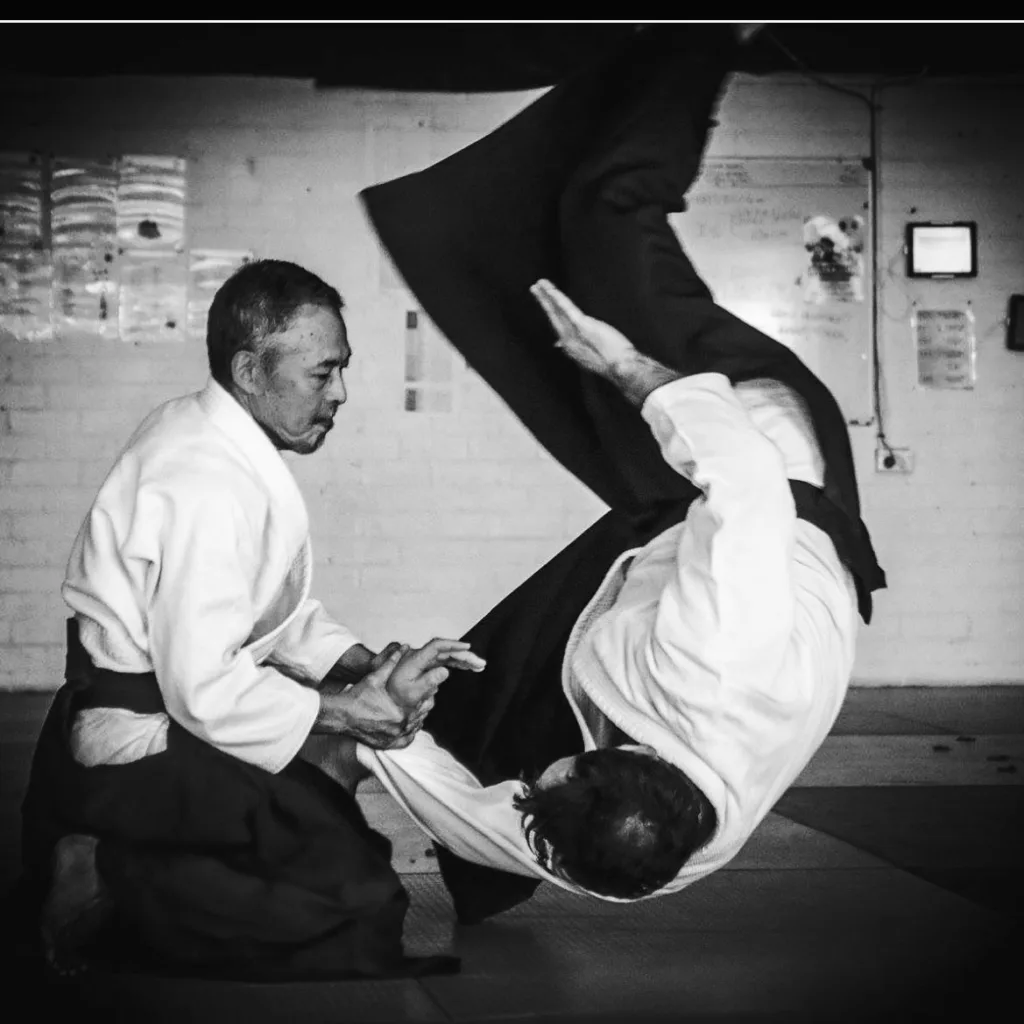
Outline Australasian Aikikai principles and practices that demonstrate our commitment to providing a safe, respectful, and inclusive environment for children and adults
Core Values
Vision
This is what A.A. Inc. as an organisation sees as its desired state and reason for being.
Personal Transformation
Aikido training leads to personal transformations. Consistent, dedicated and rigorous pursuit of this training, in an inclusive and nurturing environment of mutual respect, maximises this transformation process.
Complementary Practices
The inclusion of complementary traditions such as Iaido and Zen meditation practices in our training also assists to maximise this transformation process.
Positive Impact
Dedicated training in aikido and complementary practices positively impacts on our daily lives, including our relationships and communities within and beyond aikido. For example, it contributes to: overall health, a better understanding of how our actions affect others, an enhanced sense of personal responsibility, and a connectedness to the world around us.
Mission
This describes the scope of on-going activities that A.A. Inc. engages in to realise its vision according to its values.
Non Profit
A.A. Inc. is a non-profit incorporated organisation dedicated to promoting quality instruction and practice of the martial ways of Aikido.
Quality Standards
A.A. Inc.’s mission is to ensure students continued access to quality training programs that it sponsors through its affiliated dojos. The organisation:
- Develops curricula and teacher certification standards.
- Provides program development resources.
- Certifies ranks and promotions in conjunction with Aikido World Headquarters Japan.
- Conducts training seminars, camps, and sponsors teacher training programs.
- Offers programs in Aikido, Iai-Battoho, and Zen meditation practices.
- Sponsors scholarships and grants to encourage training.
- Supports other similar activities.
Values
Affiliations
We are an internationally recognised organisation, directly affiliated to Aikido World Headquarters Japan (Hombu Dojo), dedicated to the sincere practice of the art of Aikido as created by its founder, M. Ueshiba, and transmitted by his students, particularly T.K. Chiba, Shihan and Doshu.
Integrated Personal Development
We seek to integrate our training into a way of life such that our training adds to our total development as individuals; across our physical, mental, spiritual, and social dimensions.
Generous
We continually challenge ourselves to deeper personal growth by advancing our training in Aikido and augmenting it with related martial disciplines; particularly those derived from Iaido and Zen meditation practices. We are generous in sharing our experience with our juniors and welcome all people to join our community of practice.
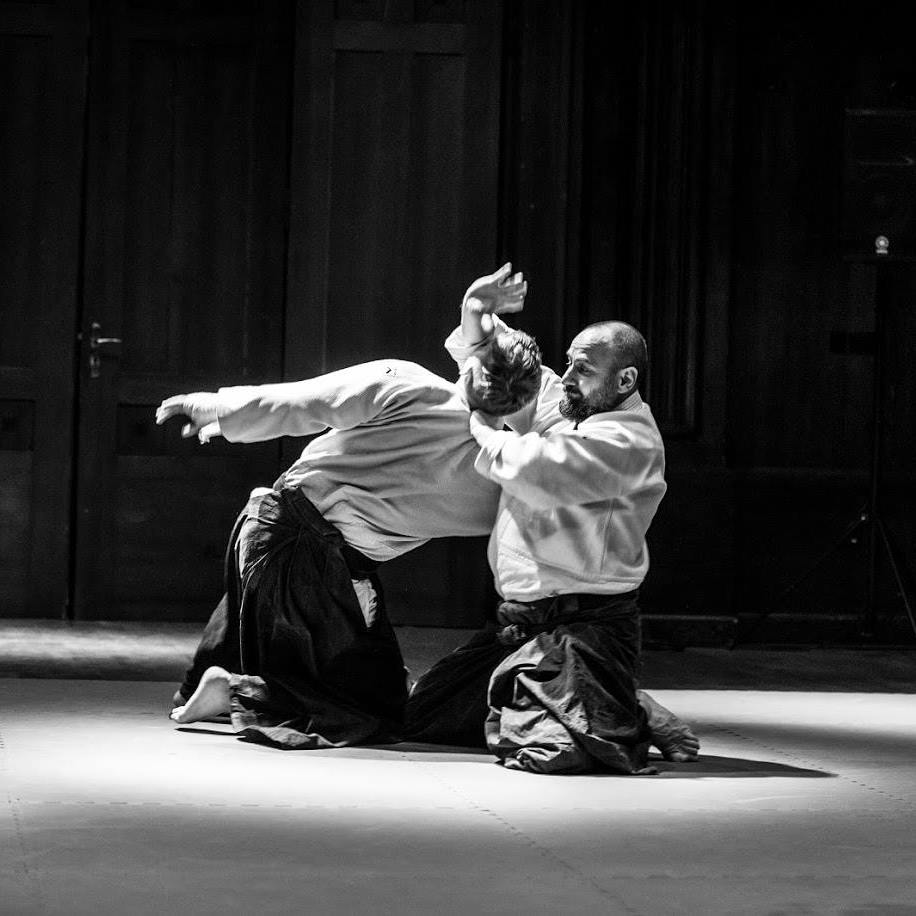
Participant Understanding
- All members understand that there is risk involved in vigorous martial arts training and they accept that risk.
- All members must be registered and financial members of their specific dojo.
- All members are to join the AA after the first grading.
- Membership of Australasian Aikikai or any of the member dojos requires a person to agree to be bound by this code of conduct and organisational policy document.
Dojo Etiquette
The etiquette at the dojo may seem confusing at times but if you carefully observe and follow the examples of the chief instructor and senior students you will soon pick it up.
Awareness
Awareness is the important thing. Be conscious not only in your training on the mat, but in the way you walk into the dojo, the way in which you align your shoes, and the way in which you speak: all these things are Budo.
Bowing
Bowing is appropriate on the following occasions (as directed by dojo Seniors):
- When entering and leaving the dojo.
- When stepping on and off the mat.
- At the beginning and end of class.
- When asking or thanking a partner for practise.
- Asking receiving direct instructions from the teacher
Cleanliness and Personal Hygiene
The cleanliness and purity of the mats and dojo are essential. Remove your shoes upon entering and place them neatly on provided shelves. Do not walk in the dojo in shoes or outside in bare feet. Make sure your feet are clean before stepping on the mat. Junior students should take responsibility for cleaning the dojo following class. Please be considerate of your training partners by practicing good personal hygiene. Nails must be kept trimmed.
Jewellery
While training remove all jewellery: watches, rings, earrings, body piercing, necklaces, bracelets, etc. or cover those items which cannot be removed. There is a high risk of injury without the removal of these various types of jewellery.
Punctuality
Be on time for class. If you are late, enter (per Awareness) and go to the changing room (wait if a technique is being demonstrated). Re-enter, sit at the corner of the mat until the instructor indicates you may join the class. Bow to the Kamiza and instructor in that order.
Injuries
If you or someone else is hurt, tell the instructor at once. If you need to rest, request permission from the instructor. If you have a problem during practice, let your partner know (wear red tape on injured body parts). Do not leave the mat without permission of the instructor.
Gratitude
At the beginning of class and when asking a partner to practise with you, say “O-negai shimasu”.
At the end of class and when thanking your partner, say “Domo Arigato gozaimashita”, or “Thank you very much”.
Mindfulness
Do not talk during class. Learning the art is done primarily through observation. Ask questions after class.
Steal From Your Seniors!
New students should seek out partners and not wait for someone to choose them.
Equipment Maintenance and Care
Weapons and/or keiko gis should always be carried in a bag or covered when outside the dojo. They should be clearly labelled. Do not leave your gi in the changing room.
Never use another person’s weapons without their permission. Every member must have their own weapons. Questions concerning the availability of weapons should be directed to the Instructor.
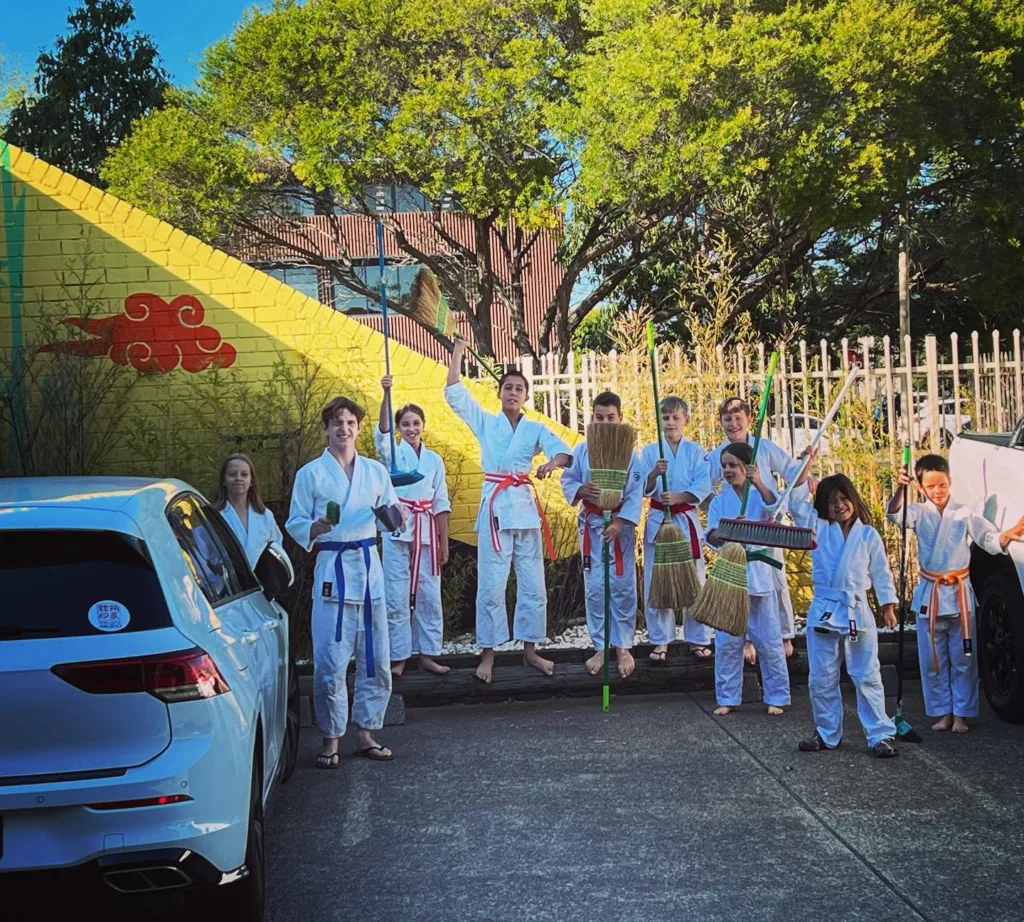
Child Protection Policy
Australasian Aikikai is committed to providing environments that are safe, supportive and friendly for children and young people.
- The Child Protection Policy practices are adopted and defined through utilising the Child Safeguarding Policy template developed by Sport Integrity Australia, an agency of the Australian Government.
- Each dojo is to nominate a Child Protection Officer, whose responsibilities include:
- Completing the Child Protection/Safeguarding e-learning through the Play By The Rules Child Protection and Safeguarding course at least once every three years, and send certification of completion to the secretary.
- Being familiar with the Child Protection Policy and Sport Integrity Australia Child Safeguarding Policy and the Child Protection resources located on the Australasian Aikikai website.
- Supporting the dojo head in any matters that require a notification to be made to the state or territory-based child protection agency.
- Completing the Child Protection Compliance checklist annually. This is to then be sent to the secretary for storing on the Australasian Aikikai google drive.
- All dojo instructors and Australasian Aikikai management committee members must complete the Child Protection/Safeguarding e-learning through the Play By The Rules Child Protection and Safeguarding course at least once every three years and send a certification of completion to the secretary.
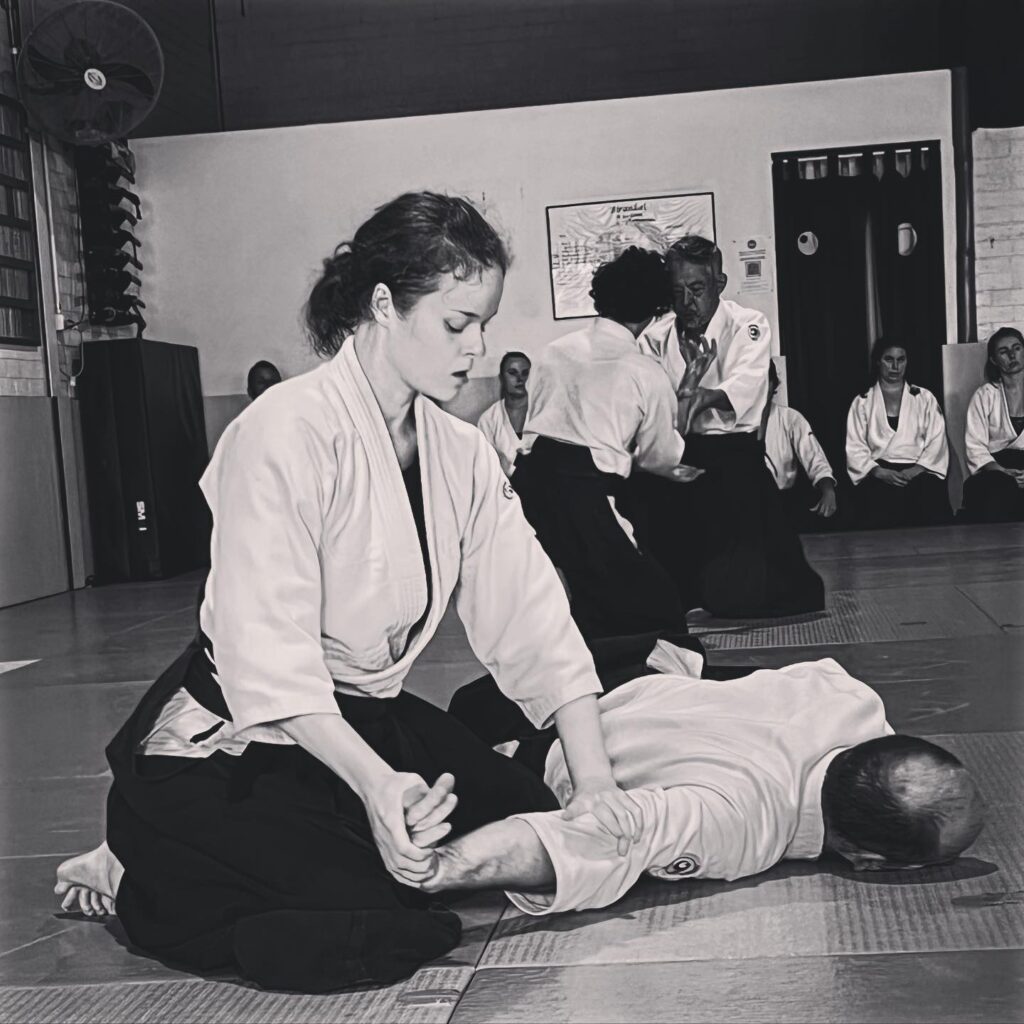
Anti-discrimination and Harassment Policy
Australasian Aikikai aims to provide an inclusive and safe environment where all people are valued and treated with respect, and without discrimination or harassment.
Australasian Aikikai prohibits all forms of discrimination based on:
- age,
- disability,
- race, including colour, national or ethnic origin or immigrant status,
- sex, pregnancy, marital or relationship status, family responsibilities or breastfeeding,
- sexual orientation, gender identity or intersex status
Any dojo members who feel that they are being discriminated against or harassed by another member of a member dojo can submit a complaint as per the procedure outlined in 6. Complaints Procedure (section below).
Australasian Aikikai prohibits all forms of bullying, harassment, and sexual misconduct.
All dojo instructors/office holders and Australasian Aikikai management committee members must complete the Australian Government’s Workplace Sexual Harassment e-learning module at least once every three years and send a certificate of completion to the secretary.
Complaints Procedure
Australasian Aikikai aims to provide a clear procedure, and to resolve complaints according to natural justice principles.
Any dojo member can make a complaint if they feel another member has acted or is acting in a way that is unacceptable or has breached the expectations outlined in this Code of Conduct and Member Policy document.
If the complaint is not resolved to the complainant’s satisfaction, a formal complaint in writing can be sent to the Australasian Aikikai Management Committee for further investigation and an appropriate and timely response. Formal complaints can be forwarded to: Newcastle Aikikai 7 Bennett St Hamilton N.S.W or e-mailed to the secretary.
Australasian Aikikai encourages the following process:
Communicate
Attempt to communicate with the person who the complaint is against to see if the problem can be resolved directly.
Seek Help
If unable to or uncomfortable with addressing the person directly, or if it doesn’t resolve the situation, the complainant can bring their complaint to the head of the dojo, or one of the senior instructors.
Action
The dojo head/senior instructor will gather information initially, and work with the complainant to resolve the issue. This may include actions such as facilitating mediation, collaborative problem solving, or disciplinary action.
Safety Policy
First Aid
All regular instructors will have current industry standard first aid training certification. Australasian Aikikai will cover the costs of these first aid training courses for instructors.
Instructors will always have access to a fully equipped first aid kit. The kit will be of the minimum standard of a St John’s Industrial First Aid Kit or equivalent.
Self Control
All persons participating in training agree to always maintain self-control and maintain care in the application of any technique.
Any person who, while training, exhibits behaviour that, in the opinion of the instructor, may cause a danger to other participants, shall not be allowed to continue training until the instructor determines the person may return to training.
Infection Control
Persons must not train if they are suffering from a transmissible infection that may be passed on to other persons. Exercise caution before returning to training to ensure that you will not increase your recovery time or inadvertently spread illness.
Existing Injuries or Conditions
Persons must advise the instructor if suffering from any injury or medical condition, either permanent or temporary, which may be adversely affected by certain types of training. Some examples of this may include (but are not limited to) blood pressure problems and cardiac disorders, neck and back injuries, diabetes, and asthma.
Policy On Blood Spillage
Blood is a potential source of serious infection. Any blood spillage should be taken seriously. Instructors and students need to be informed of the dojo policy:
- Students should immediately inform the instructor if there is blood on the mat or uniforms or any wound that may cause blood spillage.
- The source of the blood should be immediately identified, and 1st aid applied.
- The whole class should briefly stop, identify any spilled blood and recommence training, avoiding the identified areas
- A designated person or persons should be informed of the cleaning protocol an clean up the blood as quickly as possible.
- If they are able, the person whose blood it is, should clean it up since they are at no risk of infection.
- The person cleaning the blood should wear disposable gloves and use hydrogen peroxide on a disposable cloth, to completely clean the spillage.
Pregnancy And Aikido
As with all contact sports or activities involving falling or a sudden increase in intra-abdominal pressure, there is a risk of harm to the pregnancy. During the first trimester of pregnancy the is a risk of spontaneous miscarriage, even without trauma. The above activities may increase this risk or may be incidental.
Later in the pregnancy, there is a loosening of the mothers ligaments. Thus, increasing the risk of ligamentous injuries to the back, pelvis, and joints. This can occur at any stage of pregnancy but is more likely as the foetal weight increases and there is a shift of the centre of gravity.
There is a dramatic change in the blood volume and cardiovascular system during pregnancy. Thus, intense cardiovascular workout may be less well tolerated by the mother.
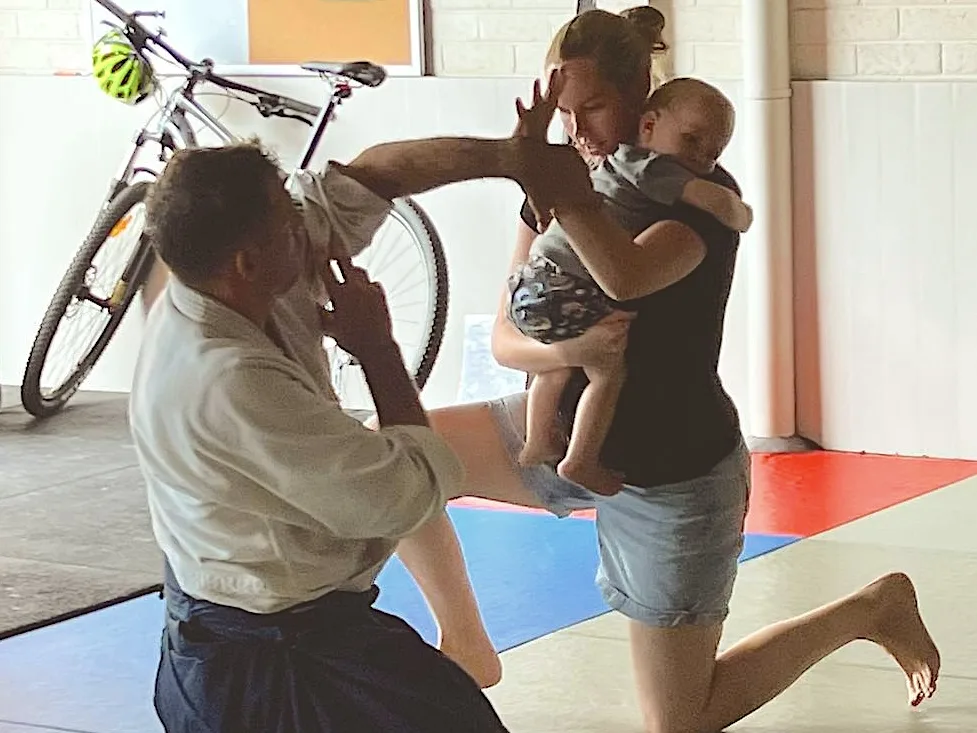
Women need to be informed that they should tell us if they are pregnant.
Pregnant women need to understand the possible risks of training.
Pregnant women train at their own risk.
If they decide to continue training, the instructor should be informed and reduce risk by modifying expectations.
Avoid deep back stretches, break falls, intense abdominal exercises, deep stretches, and intense cardiovascular workout.
Encourage lower impact training, including an emphasis on basic body movement, weapons training, and pregnancy appropriate yoga/exercises.
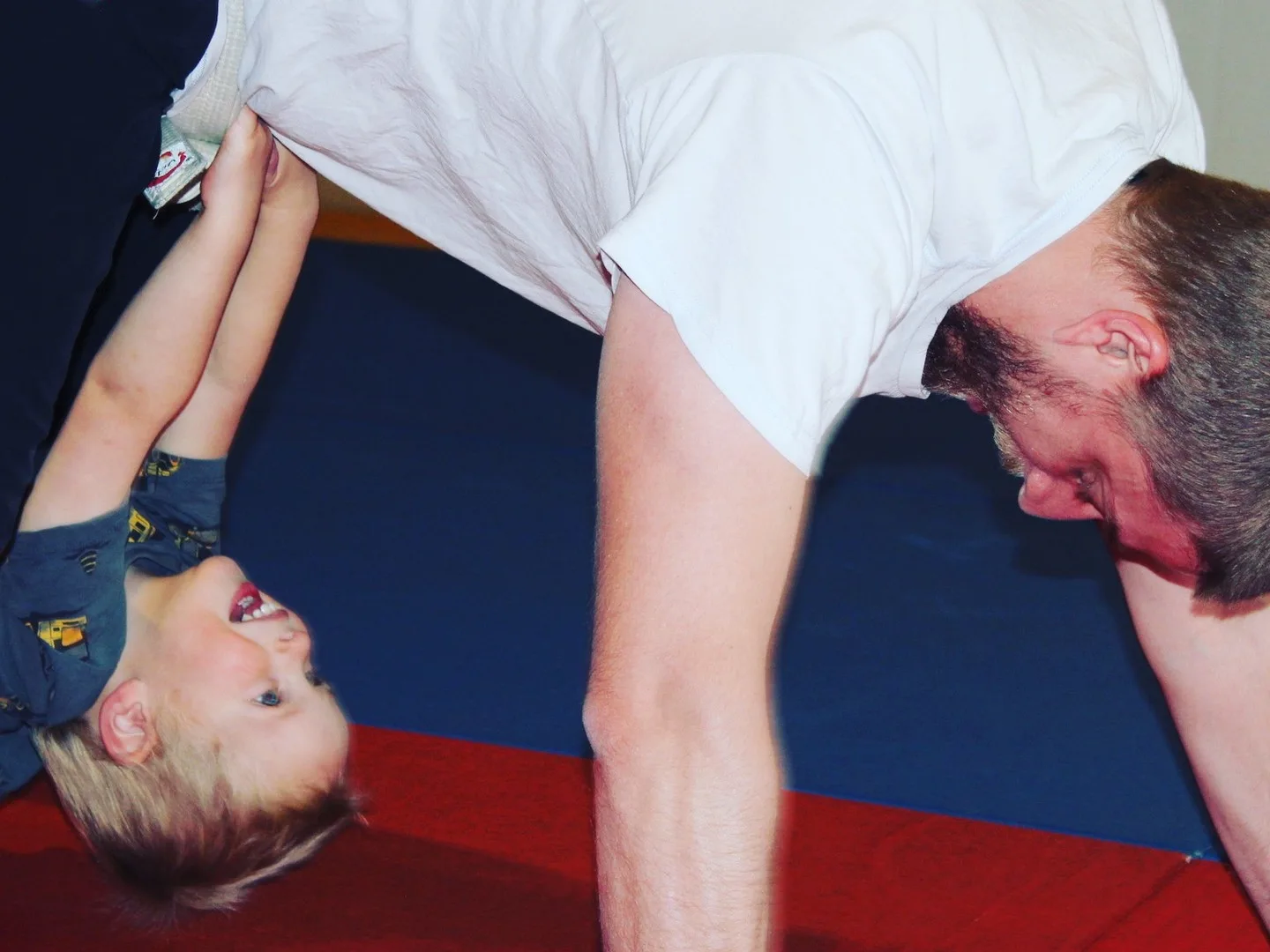
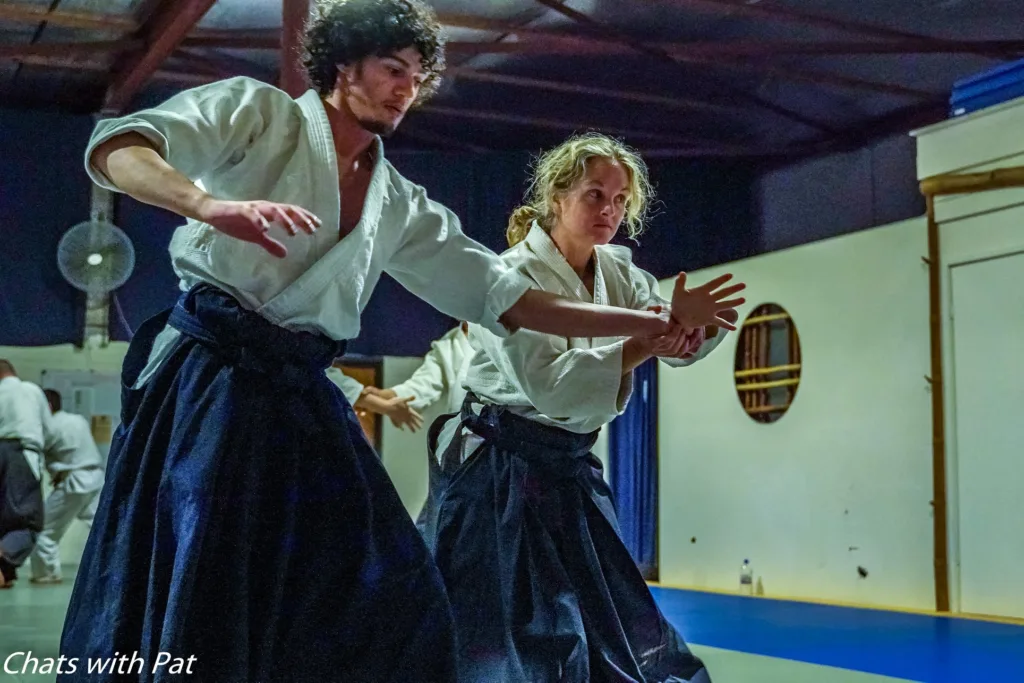
For all members and instructors
Discipline Policy
- Member dojo’s reserve the right to suspend or revoke the membership of any person who breaches the code of conduct, the policies in this document, or acts in a way that puts the safety and wellbeing of themselves or other members of the dojo at risk.
- Member dojos reserve the right to suspend or revoke a membership at any time without explanation and remove from the premises any member or person invited by him/ her who may be involved in unacceptable or inappropriate behaviour. No refund will be given to any members or guests who are removed.
- Dojo heads will seek to discuss cases (where membership has been suspended or revocation of membership is being considered) with a fellow Australasian Aikikai member dojo head, to ensure that natural justice is occurring and to be supported in decision making.
- All members have recourse through the complaints procedure as per Complaints Procedure.
Instructors
Instructors will, at all times, act with integrity and professionalism and adhere to the Australasian Aikikai Code of Conduct.
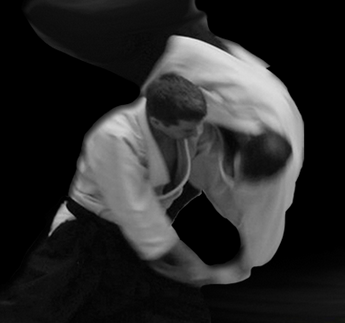
Social Media Policy
Social media is a powerful tool for promoting our organisation and member dojos in the community, and for helping members connect with each other, share information, and celebrate experiences. When engaging in social media use that relates to your membership of your dojo or Australasian Aikikai:
- Be mindful of safety for yourself and others, do not disclose personal information.
- Views or opinions expressed are your own and not necessarily shared or endorsed by those Australasian Aikikai.
- Exercise discretion in the choice of contacts you are linked to.
- Be positive, courteous, respectful and reasonable.
- Avoid bad language, negative, controversial or offensive comments and /or statements.
- Check with your dojo head or senior instructor if you are unsure about something you want to post.
- All dojos need to have a clear opt in/opt out question on the enrolment form for parents/guardians to fill out regarding the use of their child’s images on social media.
- No identifying information should be provided when using images of children, even when their parents/guardians have opted in for their image to be used on social media, as per the Safety Policy.